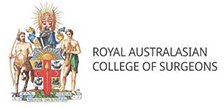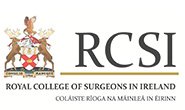Oncoplastic Reconstruction
What is Oncoplastic Reconstruction?
Oncoplastic reconstruction is a specialised surgical technique used in the treatment of breast cancer.
This approach combines the principles of oncologic surgery, which focuses on effectively removing cancerous tissue, with plastic surgery techniques aimed at preserving or restoring the breast's appearance.
Who is Suitable for Oncoplastic Reconstruction?
Oncoplastic reconstruction is suitable for patients who are undergoing breast-conserving surgery (BCS) and wish to maintain or improve the aesthetic appearance of their breasts post-surgery. Ideal candidates for oncoplastic reconstruction typically include:
- Patients with Partial Mastectomy: Those who are undergoing or have undergone a partial mastectomy, where a significant portion of the breast tissue is removed, and there is a potential for cosmetic deformity.
- Patients with Larger Breasts: Individuals with larger breasts may benefit more from oncoplastic techniques, as they often have more tissue available for reshaping and filling surgical defects.
- Patients Concerned About Cosmetic Outcomes: Those who are particularly concerned about the visual and symmetrical appearance of their breasts post-surgery.
- Patients with Tumours in Challenging Locations: Oncoplastic techniques may benefit patients with tumours located in challenging parts of the breast that are difficult to remove without causing significant cosmetic changes.
- Patients Undergoing Radiation Therapy: Oncoplastic reconstruction can also be suitable for patients who will undergo radiation therapy after surgery, as the techniques can help in managing the cosmetic changes that might result from radiation.
Benefits of Oncoplastic Reconstruction
- Improved Aesthetic Outcomes: One of the primary benefits is the enhanced cosmetic appearance of the breasts following surgery. The techniques used in oncoplastic surgery help maintain the natural shape, size, and symmetry of the breasts, even after significant tissue removal.
- Enhanced Psychological Well-being: Preserving or enhancing the breast's appearance can significantly boost a patient's self-esteem and psychological well-being, both during and after cancer treatment.
- Increased Options for Breast Conservation: Oncoplastic techniques can allow for more extensive removal of cancerous tissue while still preserving the breast, which might expand the eligibility for breast-conserving surgery to patients who would otherwise require a full mastectomy.
- Reduced Need for Additional Surgeries: Oncoplastic reconstruction often reduces the need for further corrective surgeries by addressing the cosmetic outcome during the initial surgery.
- Simultaneous Cancer and Cosmetic Surgery: This approach enables the treatment of cancer and cosmetic reconstruction to be completed in a single procedure, thereby reducing overall recovery time and the number of surgeries a patient must undergo.
Types of Oncoplastic Reconstruction
Oncoplastic reconstruction techniques can be broadly categorised into two types based on the extent of tissue removal and the subsequent reconstructive needs:
- Volume Displacement Techniques: These are used primarily when smaller sections of the breast are removed. Techniques include:
- Local Tissue Rearrangement: Adjusting and reshaping the remaining breast tissue to fill in the defects left by tumour removal.
- Therapeutic Mammaplasty: Combining tumour removal with reduction mammaplasty techniques is particularly useful in women with larger breasts.
- Volume Replacement Techniques: Used when larger portions of the breast are removed, and there isn’t enough remaining tissue to reshape the breast:
- Chest wall Perforator Flaps Reconstructions: Using tissue from the front and the side of the chest wall (LICAP, AICAP, and MICAP) flaps.
- Alternative Options to Oncoplastic Reconstruction
For patients who may not choose or be suitable for oncoplastic reconstruction, there are other options available:
- Traditional Breast Reconstruction: Implants or Tissue reconstruction.
- Simple Lumpectomy without Reconstruction
- Mastectomy without reconstruction: Simple (flat) or Goldilocks’ mastectomy.
- External Prostheses
Preparation Before an Oncoplastic Reconstruction
- Consultation with Specialists: Patients should meet with a breast oncologic surgeon and a plastic surgeon. These discussions will cover the specifics of the cancer, the planned surgery, and the expected cosmetic outcomes.
- Medical Evaluations: Comprehensive medical evaluations, including blood tests, imaging studies (like mammograms and MRIs), and possibly a biopsy to assess the nature and extent of the cancer.
- Discussing Expectations and Outcomes: Clear communication about the expected outcomes, potential risks, and recovery timeline is essential.
- Preoperative Instructions: These may include guidelines on eating, drinking, medication adjustments, and smoking cessation to minimise surgical risks and promote optimal healing.
- Arranging for Recovery: Planning for post-operative care, including help at home, time off from work, and transportation arrangements for post-surgery visits.
Oncoplastic Reconstruction Procedure
Oncoplastic reconstruction generally takes place during the same operation as the cancer removal surgery. The procedure can vary widely, but typically follows this process:
- Anaesthesia: The patient is placed under general anaesthesia.
- Cancer Removal: The surgeon removes the cancerous tissue, ensuring clear margins to minimise the risk of cancer recurrence. Please note that there is 10-20% probability that another surgery may be required.
- Reconstruction: Immediately following tumour removal, the reconstructive phase begins:
- Volume Displacement: If only a portion of the breast is removed, the surgeon may use the remaining tissue to reshape the breast, potentially performing a breast lift or reduction to achieve symmetry.
- Volume Replacement: For larger defects, the surgeon may use a flap of tissue from another part of the body to reconstruct the breast.
- Symmetry Procedures: Surgery on the opposite breast may be performed to enhance symmetry.
- Closure: The incisions are closed with sutures, and drains may be placed to remove excess fluids.
- Hospital Stay: Depending on the extent of the surgery, a short hospital stay may be necessary.
Oncoplastic Reconstruction Recovery Plan
A well-planned recovery is vital for the best outcomes after an oncoplastic reconstruction:
- Physical Rest and Gradual Activity Resumption: It’s crucial to rest initially but gradually increase activity as recommended to promote healing.
- Wound Care: Proper surgical site care is necessary to prevent infection.
- Monitoring for Complications: Awareness of potential signs of infection, abnormal swelling, or changes in breast appearance.
- Lymphedema Prevention (only if the surgery involves axillary lymph node dissection): Exercises or precautions to prevent lymphedema, especially if lymph nodes were involved in the surgery.
- Wearing a compression bra for a period of 6-8 weeks (this will be discussed with the room's breast care nurse).
- Follow-up Care: Regular follow-ups are conducted to assess cosmetic outcomes and determine any need for further corrective procedures.
Oncoplastic Reconstruction Prognosis
The prognosis following oncoplastic breast reconstruction is generally favourable, with many patients experiencing satisfactory cosmetic results and quality of life improvements.
This procedure allows for effective cancer removal while maintaining the appearance of the breast, which can significantly enhance a patient's psychological and emotional well-being.
Moreover, oncoplastic reconstruction has shown similar recurrence rates to conventional breast cancer surgeries, indicating that it is an effective option for cancer control.
Oncoplastic Reconstruction Risks
- Infection: Any surgery introduces a risk of infection at the incision sites.
- Bleeding and Hematoma Formation: Excessive bleeding or blood collection under the skin can occur, sometimes requiring additional surgery.
- Scarring: While surgical techniques aim to minimise visible scarring, all surgeries leave some scars, and the appearance can vary widely among individuals.
- Changes in Breast Sensation: The sensation of the nipple and breast skin may change temporarily or permanently.
- Asymmetry: Differences in size, shape, or position between the breasts may remain and require further corrective surgery.
- Complications from Flap Surgery: If the reconstruction involves moving tissue from one part of the body to another (flap surgery), additional risks like reduced blood flow to the transferred tissue can cause tissue death.
- Delayed Healing: Particularly in patients who are smokers or have diabetes, healing may be slower and more complicated.
- Recurrence of Cancer: As with any cancer surgery, there is a risk that not all cancer cells are removed, which could lead to recurrence.
Breast Aesthetics
Breast aesthetics encompasses a range of procedures designed to enhance the appearance of the breasts.
Breast Asymmetry
Breast asymmetry occurs when one or both breasts differ in size, shape, or position. It's a common issue for many women, though the degree of asymmetry varies greatly. Surgical correction is an option for those whose asymmetry is significant or causes emotional or physical discomfort. Surgical options can include:
- Augmentation of One or Both Breasts: One or both breasts may be augmented to balance size differences.
- Reduction of One or Both Breasts: Similarly, reducing the size of one or both breasts can help achieve symmetry.
- Lift: This can be performed on one or both breasts to correct differences in their positioning or shape.
Addressing breast asymmetry aims to achieve a more balanced appearance and can help improve personal comfort and self-confidence.







